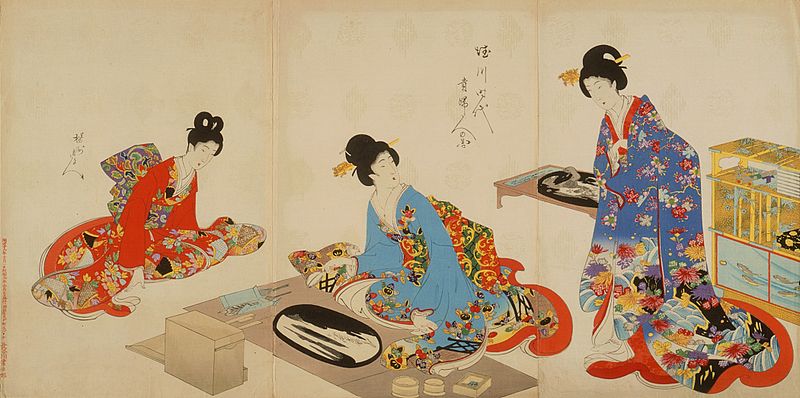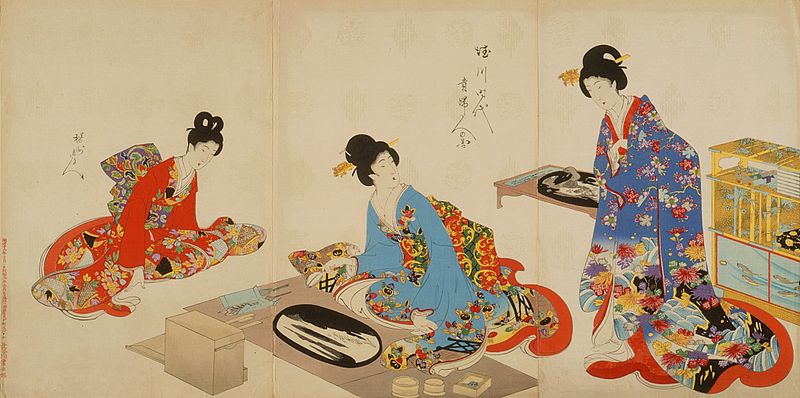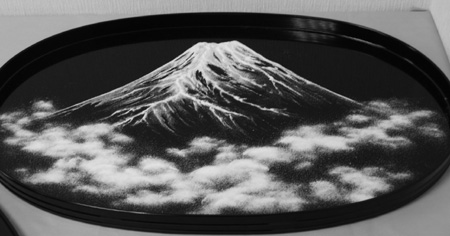
Bonseki: The Ancient Japanese Art of Miniature Sand Sculpting
Bonsai is a familiar Japanese art form of growing miniature trees in pots or trays. Bonseki is another ancient Japanese art of creating miniature landscapes on a black lacquer tray out of various sizes of pebbles, small rocks, and white sand using delicate tools such as small flax brooms, feathers, wood wedges, sifters, and spoons. The black lacquer trays can either be low-rimmed ovals or rectangular and flat.
Print of Japanese women’s creating bonseki.
Bonseki (盆石) or tray rocks, often depict scenes of gardens, mountains, and seashores with miniature structures. Rocks can represent mountains, rocky islands, or shore lines. Fine sand resembles waves from the ocean as they break water against the rocks.
The miniature structures of bridges, temples, or houses are usually painted copper. Bonseki scenes are meant to be temporary but can sometimes be preserved using special methods. The preserved bonseki scene is called bonga (tray picture) or suna-e (sand picture).
History of Bonseki
Supposedly, Emperor Tenmu (631 – 686), the 40th emperor of Japan, used Bonseki techniques to describe landscapes and natural objects. Several gardens in Kyoto are also believed to have been designed using bonseki. The 1300 essay by the Japanese Zen monk Kokan Shiren, “Rhymeprose on a Miniature Landscape Garden,” talks about the principles of bonseki and garden architecture.

Mt. Fuji bonseki. | Crossfire
Bonseki became a popular art form of the Japanese aristocracy during the reign of Ashikaga Yoshimasa (1443-1490). The historical figure with the most profound influence on “the Japanese “Way of Tea,” Sen no Rikyū (1522 – 1591), practiced bonseki.
One of his students, Hosokawa Sansai, put up a school dedicated to the art of bonseki. The Edo period saw the art form flourish even more with more schools forh ladies of the Shogunate court in old Tokyo who showed a keen interest in bnseki.
The influx of Western influence brought about a noticeable decline in interest in bonseki. But recently, bonseki is seeing a revival among some groups such as the Tokyo Kuyo-Kai composed of some of the former students of the headmasters of the Hosokawa School, who are striving to improve on the Hosokawa techniques while at the same time maintaining the traditional trademark elegance of the craft. Bonseki is truly a wonderful way to experience and appreciate the unique and beautiful culture of Japan.
Check out this YouTube video:
